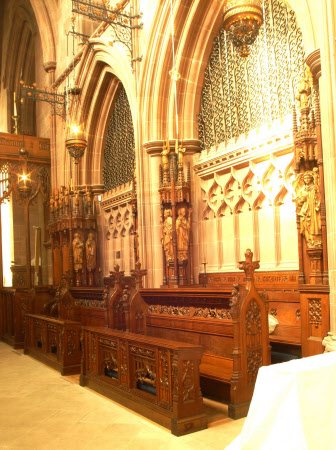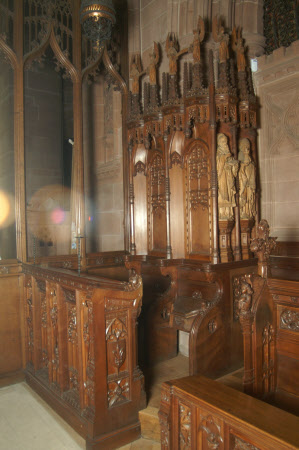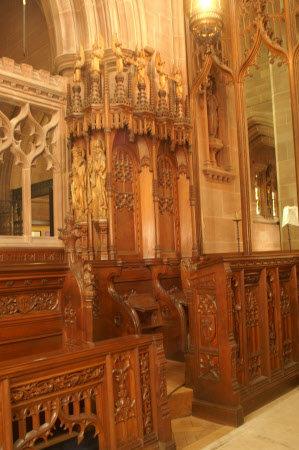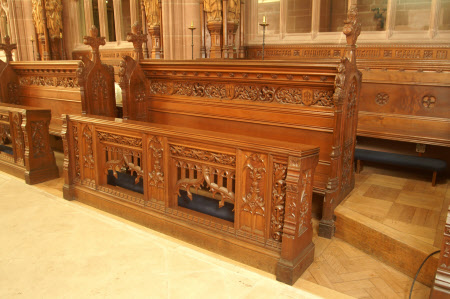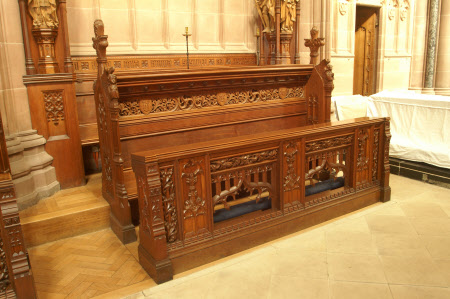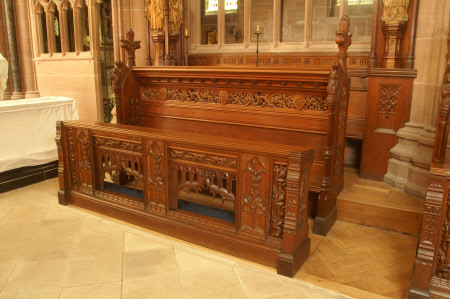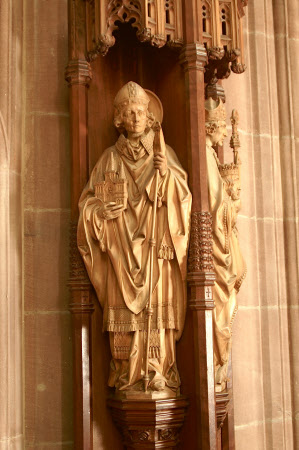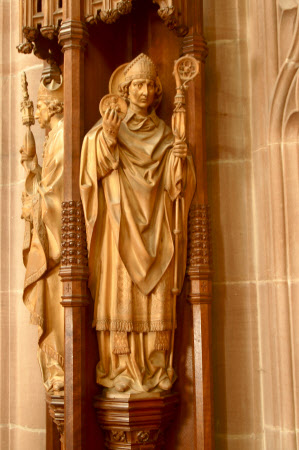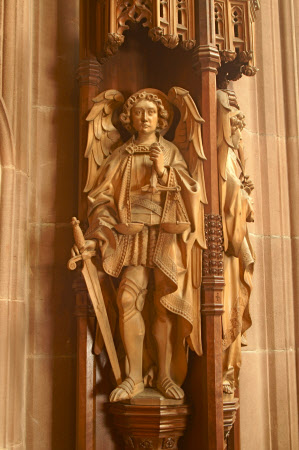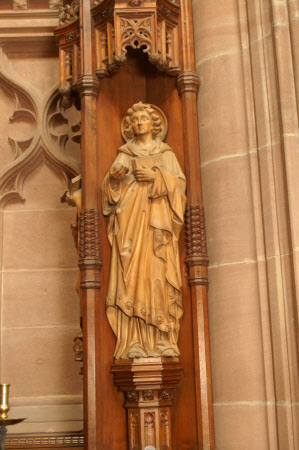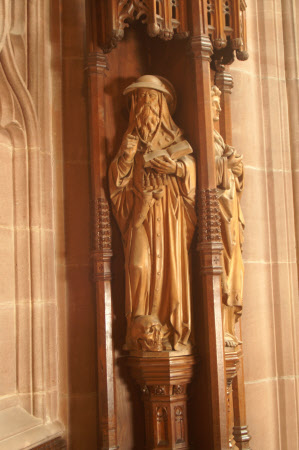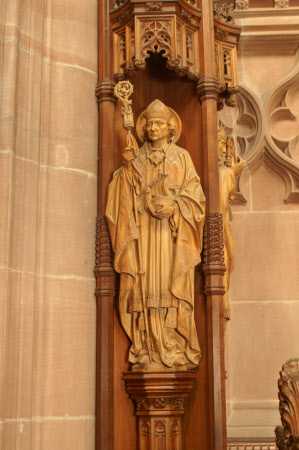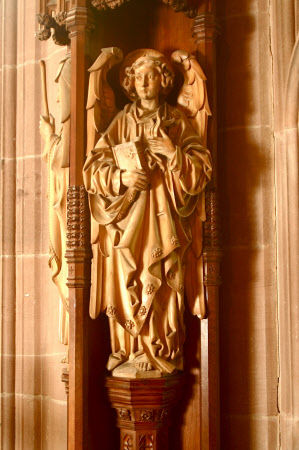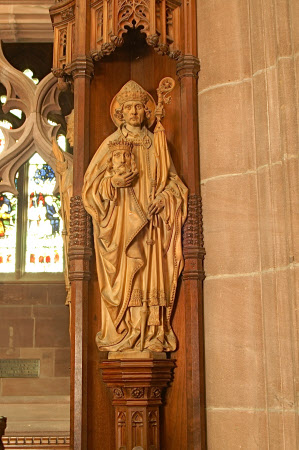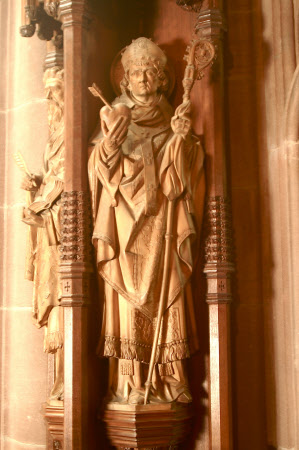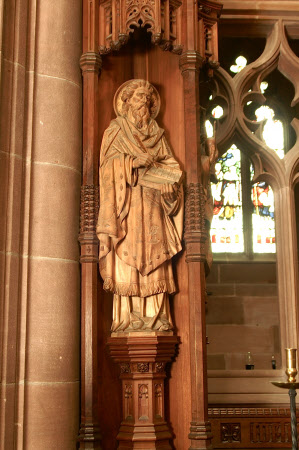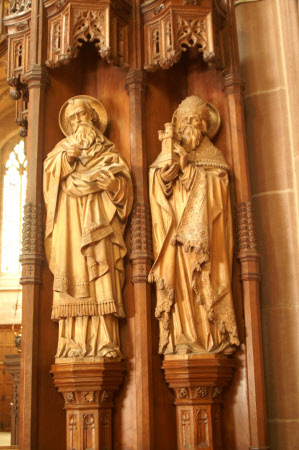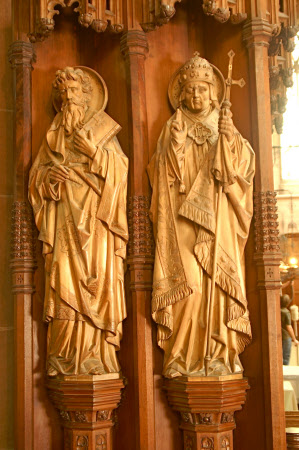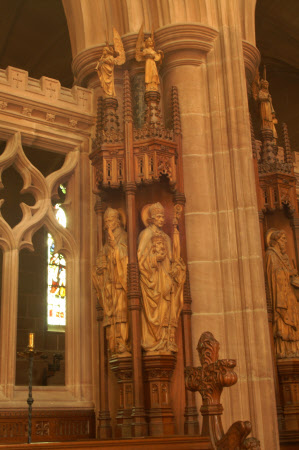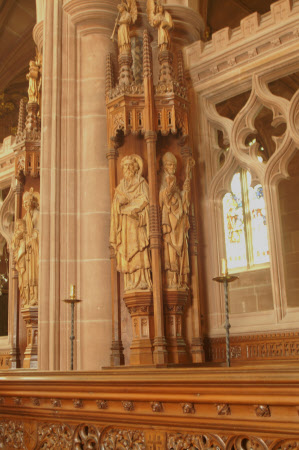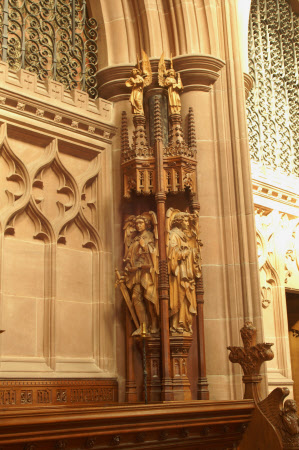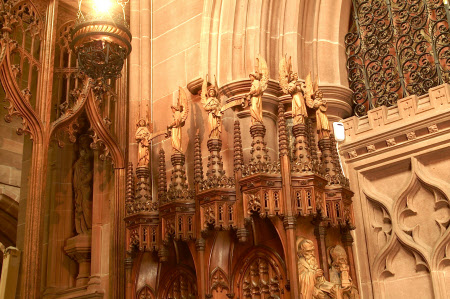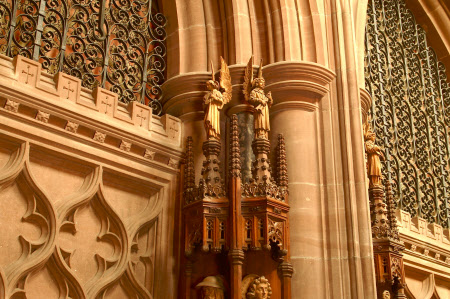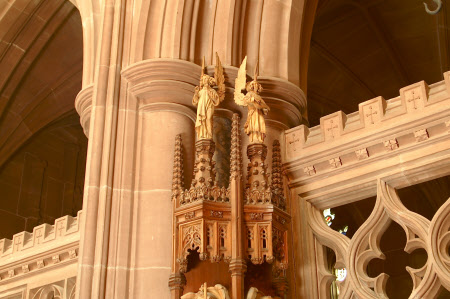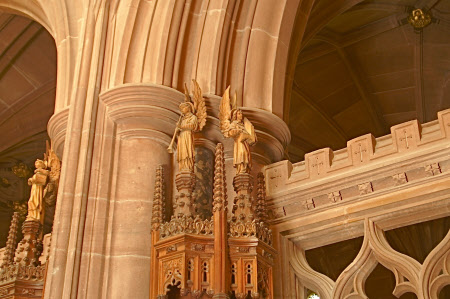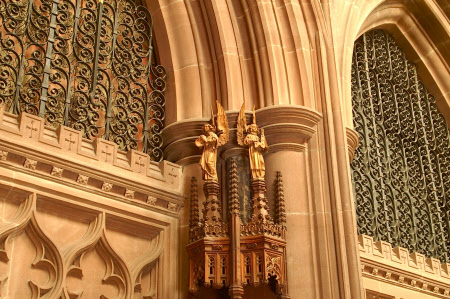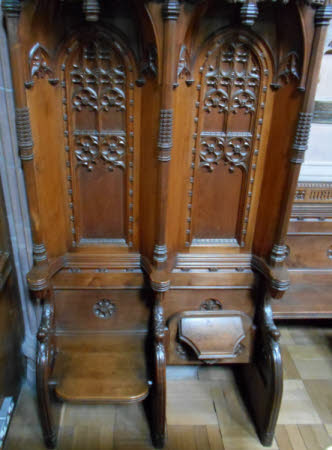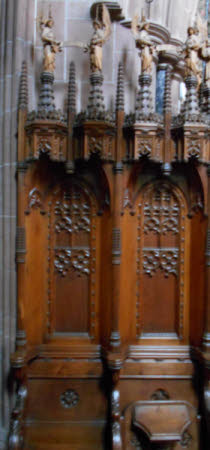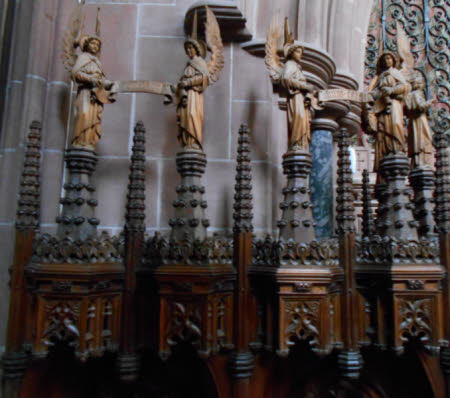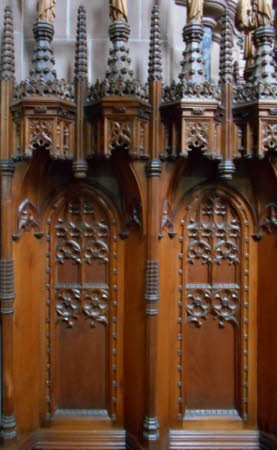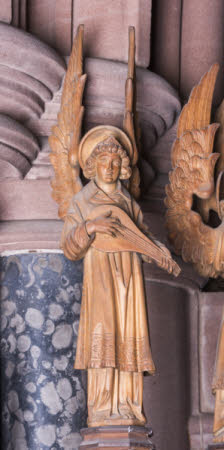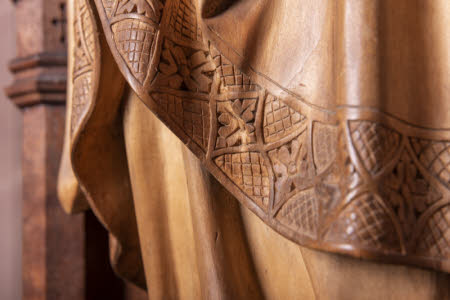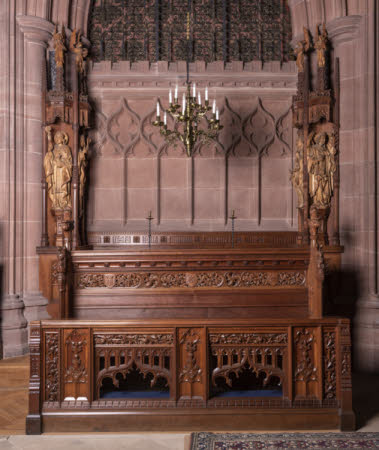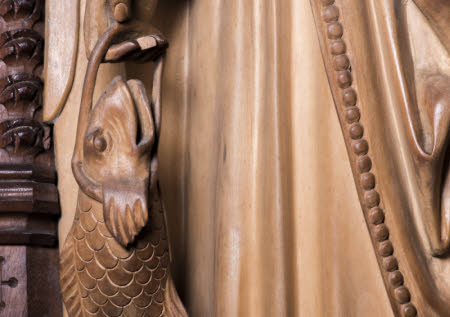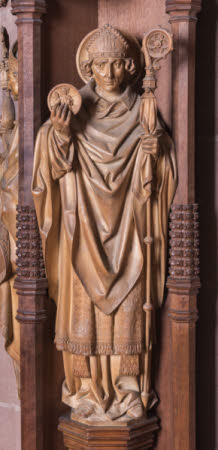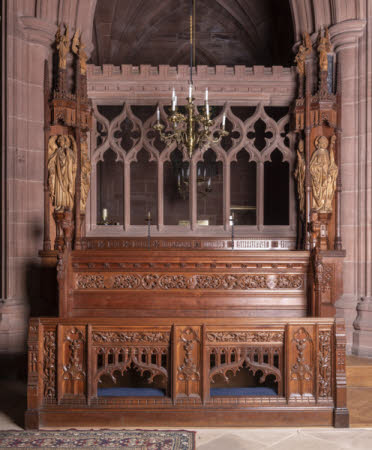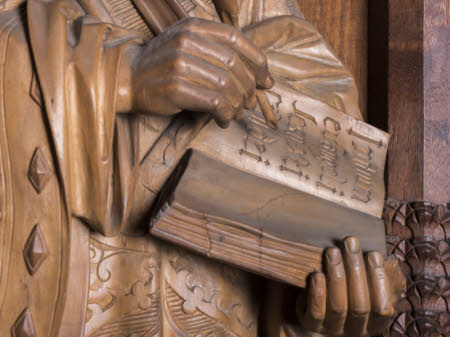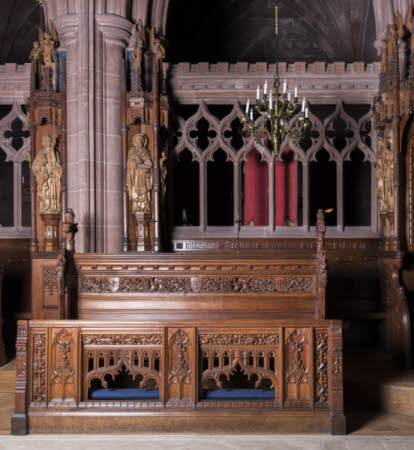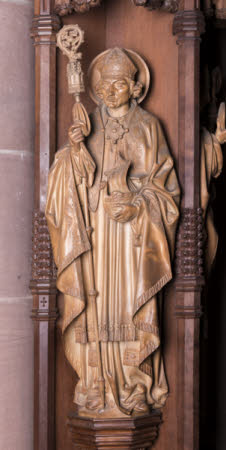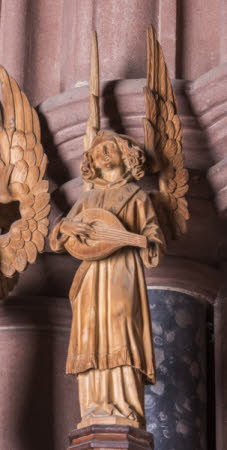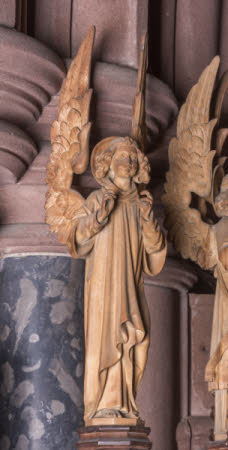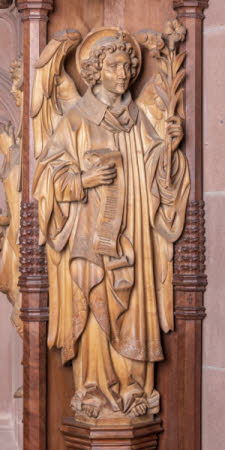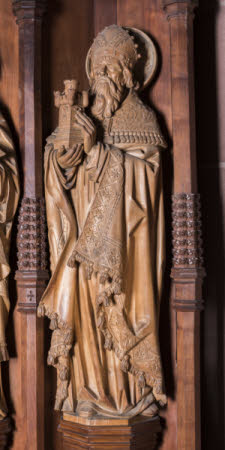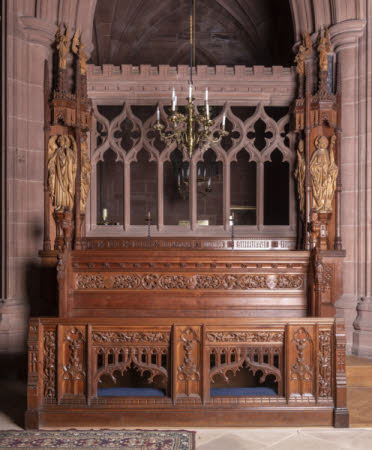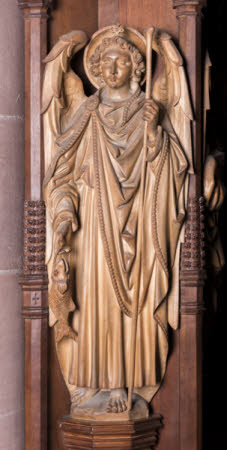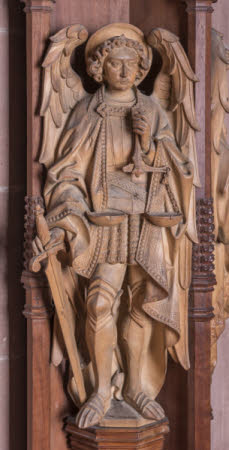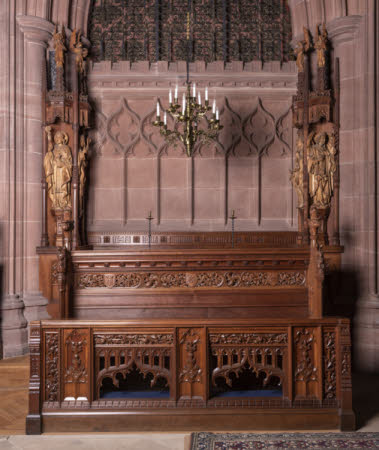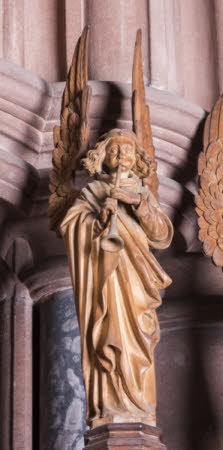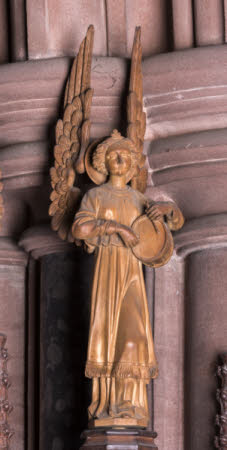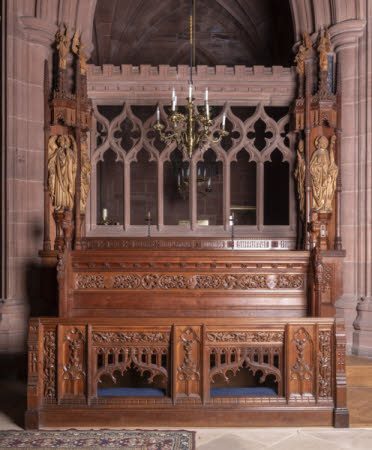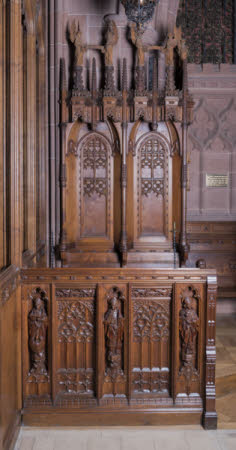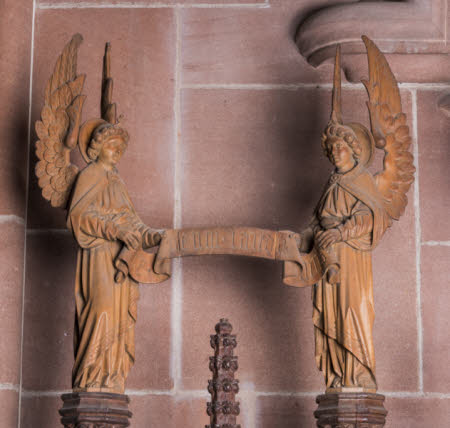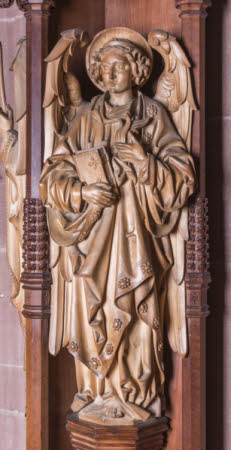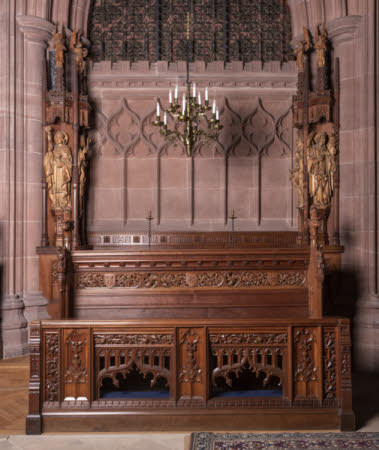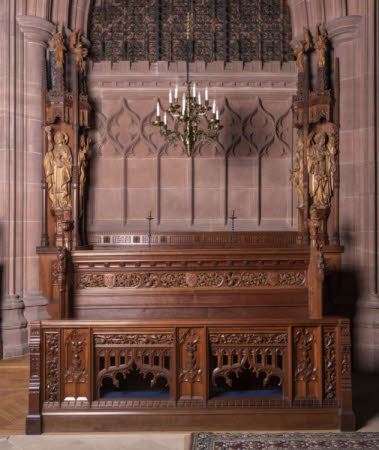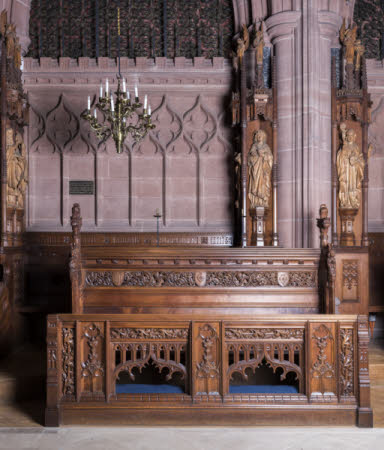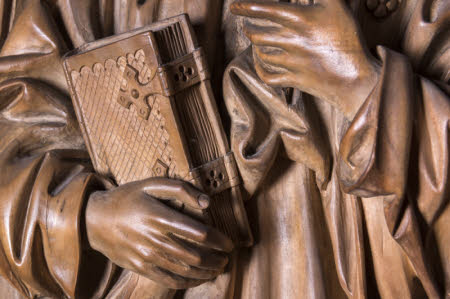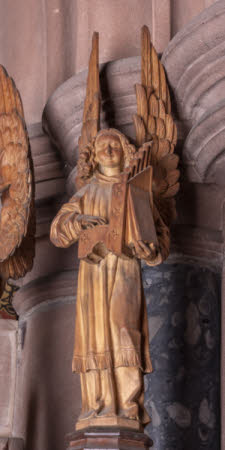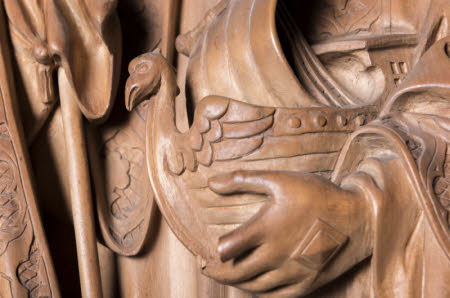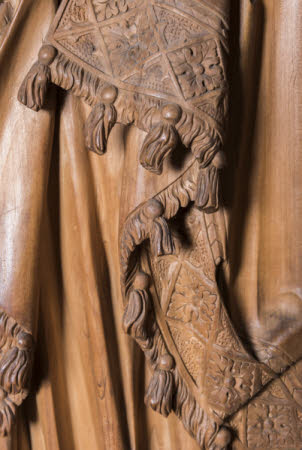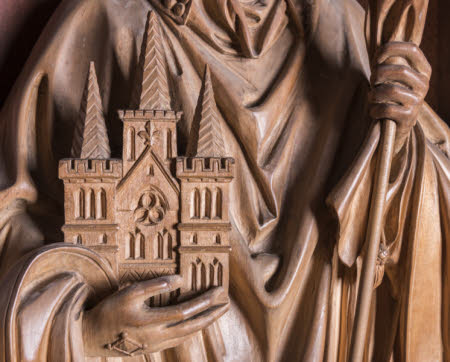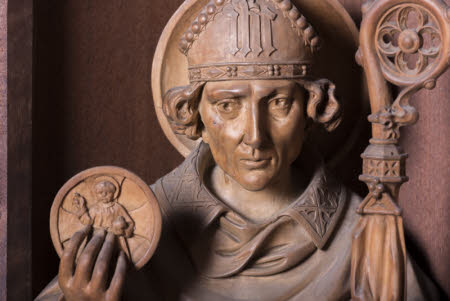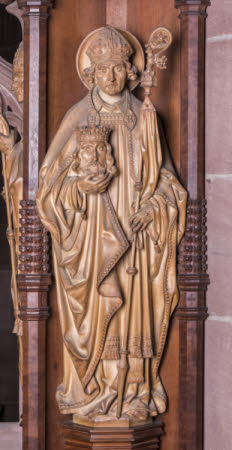Set of six choir stalls
Ernest Geldart (1848 - 1929)
Date
circa 1889 - 1912
Materials
Oak, limewood
Place of origin
England
Order this imageCollection
Clumber Park, Nottinghamshire
NT 232403
Summary
A set of carved oak choir stalls, comprising two sets of clergy stalls and four blocks of choir Stalls, the clergy stalls and two of the choir stalls were designed by George Frederick Bodley R.A. (1827-1907), English, circa 1889. The remaining two eastern choir stalls were supplied in 1912 and probably designed by the Reverend Ernest Geldart (1848-1929).
Full description
Split equally to the north and south sides of the Chancel. Each clergy stall comprises a book rest to the front adorned by three oak carved saints and two hinged seats to the rear with niched backs and carved double canopy above surmounted by four limewood angels holding banners in pairs. The choir stalls have a rear bench seat with carved inscription panel above and two canopied niches to each side containing a limewood saint surmounted by a limewood angel holding a musical instrument. In the middle is a further bench seat with book rest to the rear and sides with carved angel shoulders and fleur-de-lys pinnacles. The front section is a decorative book rest with carved front panels and sides. There are twenty four limewood angels forming the orchestra and sixteen limewood saints. The original interior had the first eight limewood figures adorning these sections depicting the four Doctors of the Western Church and the four Evangelists. In the south-west corner stood St. Matthew and St. Gregory, to the south-east St. Mark and St. Augustine, in the north-west corner stood St. Luke and St. Ambrose and in the north-east St. Jerome and St. John. The later eastern stalls held the figures St. Michael, St. Gabriel, St. Raphael and St. Uriel depicting the four Archangels and St. Chad, St. Cuthbert, St. Wilfred and St. Aidan, the four Northern Saints. Following structural works in 1988 some of the figures have since moved positions. Bodley was the senior partner of the firm of architects, Bodley & Garner from 1869. The Clumber Park Chapel and some of the interior fittings were built between 1886-9 by Bodley & Garner for the seventh Duke of Newcastle (1864-1928) Geldart, an Anglican cleric and architect was engaged on the final phase of work on the chapel following the quarrel and subsequent discharge of Bodley. After the Duke’s death the chapel fell into disuse and eventually closed when the Newcastle family home was demolished in 1936. The chapel reopened following the acquisition of the estate in 1946 by the National Trust. (James Weedon, October 2019)
Provenance
Acquired with the estate by the National Trust in 1946 from the Trustees of the 9th Duke of Newcastle.
Makers and roles
Ernest Geldart (1848 - 1929), architect George Frederick Bodley (1827 - 1907), architect Ernest Geldart (1848 - 1929), designer George Frederick Bodley (1827 - 1907), designer
References
Dawson, George 'The church bells of Nottinghamshire: part 1' (1994) Simpson, F.M. ‘George Frederick Bodley, R.A., F.S.A., D.C.L.’, RIBA Journal 3rd Series, Vol. Xv, 1908. Jenkins, Simon 'England's thousand best churches' 1999, pp517-18

